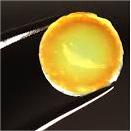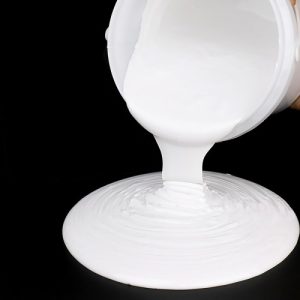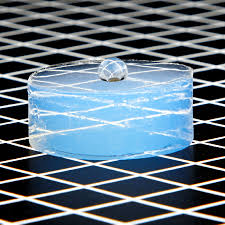Professional industry ceramic supplier, silicon nitride, silicon carbide, aluminum nitride and any other kinds of ceramics.
1. Introduction
Just 36 hours ago, a major materials science conference in Dresden spotlighted breakthroughs in reusable high-temperature ceramics—specifically, next-gen silicon carbide crucibles that can withstand over 1,600°C without flinching. Attendees weren’t just engineers; chefs and ceramic artists were there too, marveling at how the same material used to melt titanium is now showing up in black ceramic dinner plates and butter dishes. Yes, your casserole might be cooked in the same family of materials that helps forge jet engine parts.

Enter the silicon carbide crucible: tough, thermally savvy, and surprisingly versatile. Forget boring lab gear—this is industrial glam with a side of thermal shock resistance.
2. What Exactly Is a Silicon Carbide Crucible?
A silicon carbide crucible is a container made from silicon carbide (SiC), an advanced ceramic renowned for its extreme hardness, thermal conductivity, and resistance to chemical corrosion. Unlike your grandma’s clay pot, this crucible laughs in the face of molten metal, glass, or reactive slags.
Silicon carbide itself is a compound of silicon and carbon, often sintered or reaction-bonded (RBSiC) into dense, robust forms. The resulting crucibles are lightweight yet incredibly durable—ideal for foundries, laboratories, and even niche culinary applications where heat distribution matters more than Instagram aesthetics.
3. Why Choose Silicon Carbide Over Other Ceramics?
3.1. Boron Carbide vs Silicon Carbide
Let’s settle this once and for all: boron carbide (B4C) is harder—great for body armor—but it’s brittle and expensive. Silicon carbide? Tougher in thermal cycling, cheaper to produce, and far more practical for repeated heating and cooling. For crucibles, SiC wins by a landslide.
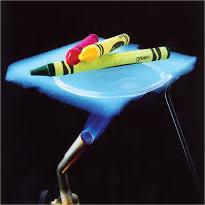
3.2. Zirconia and Alumina Alternatives
Zirconia crucibles (ZrO2) offer excellent chemical inertness but poor thermal shock resistance. Alumina (Al2O3) crucibles handle high temps but crack under rapid temperature swings. Silicon carbide? It thrives on drama—thermal drama, that is.
4. Beyond the Crucible: The Expanding Universe of Silicon Carbide Ceramics
Silicon carbide isn’t just for holding molten stuff. Its applications have exploded into everyday—and not-so-everyday—items:
- silicon carbide ceramic tiles for kiln linings and industrial flooring
- RBSiC silicon carbide tile blocks for furnace construction
- silicon carbide ceramic columns and rings for structural support in high-temp environments
- silicon carbide burner nozzles and bricks for efficient combustion systems
- silicon carbide tubes (including porous and thermocouple protection variants) for gas handling and sensing
And yes—even your kitchen isn’t safe from the SiC invasion. Behold the silicon carbide ceramic baking dish, silicon carbide ceramic dinner plates, and yes, even a silicon carbide ceramic butter dish with lid. Some brands market ‘silicon carbide baking dish Staub’-style cookware, touting even heating and oven-to-table elegance.
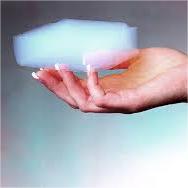
5. Silicon Nitride: The Sophisticated Cousin
While silicon carbide dominates brute-force applications, silicon nitride (Si3N4) plays the refined strategist. Known for superior fracture toughness and creep resistance, silicon nitride crucibles are rarer but prized in aerospace and semiconductor labs.
Factories specializing in silicon nitride crucible production also craft custom silicon nitride heat shields, silicon nitride plates, and insulating rings. The high purity silicon nitride powder market is growing rapidly, driven by demand for precision components in electric vehicles and 5G infrastructure.
That said, don’t expect a silicon nitride salad bowl anytime soon—it’s still too costly for dinnerware. Stick with silicon carbide ceramic salad bowls if you want both style and substance.
6. Practical Considerations: Sourcing and Customization
Whether you need a standard silicon carbide crucible for aluminum melting or a bespoke silicon carbide ceramic casserole dish with lid for gourmet use, customization is widely available. Advanced ceramics manufacturers now offer everything from silicon carbide ceramic ramekins to handcrafted black plates and holiday-themed silicon carbide Christmas ceramic platters.
For industrial clients, options include silicon carbide ceramic piping, grinding discs, and even ceramic disc taps for high-wear plumbing. The material’s versatility blurs the line between utility and artistry.
7. Safety, Myths, and Misconceptions
Despite viral rumors, silicon carbide ceramic cookware is generally safe—non-toxic, non-reactive, and free from PFOA or lead (when sourced from reputable makers). Unlike some ceramic coatings that degrade, solid SiC dinnerware won’t leach chemicals into your béchamel.
And no, you can’t easily drill holes in a silicon carbide crucible with a home drill—this stuff requires diamond-tipped tools. Respect the carbide.
8. Conclusion
From molten metal to Monday meatloaf, the silicon carbide crucible and its ceramic kin prove that advanced materials aren’t just for labs—they’re reshaping how we cook, build, and innovate. As industries push toward higher efficiency and sustainability, silicon carbide stands ready: unmeltable, unbreakable (mostly), and unexpectedly chic.
Our Website founded on October 17, 2012, is a high-tech enterprise committed to the research and development, production, processing, sales and technical services of ceramic relative materials such as Silicon. Our products includes but not limited to Boron Carbide Ceramic Products, Boron Nitride Ceramic Products, Silicon Carbide Ceramic Products, Silicon Nitride Ceramic Products, Zirconium Dioxide Ceramic Products, etc. If you are interested, please feel free to contact us.

